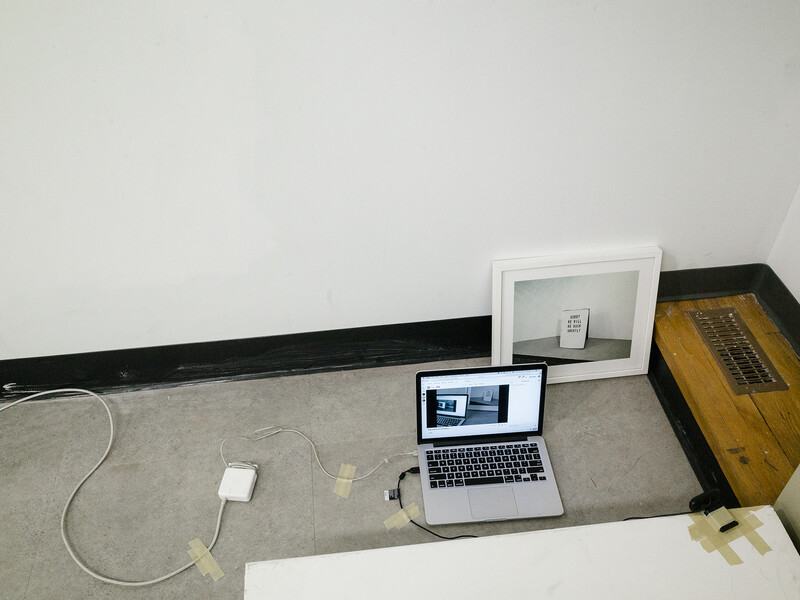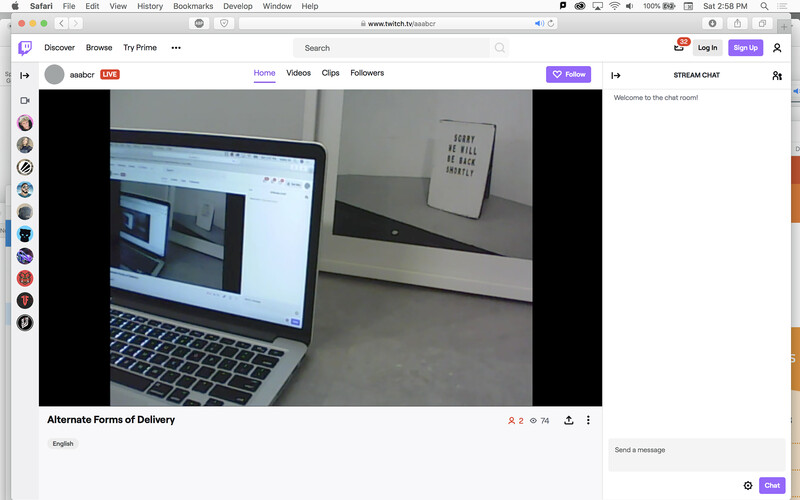- 7.1.0Cover
- 7.1.1tl;dr part 1Editorial
- 7.1.2Conjecture DiagramsSara Graham
- 7.1.3The Year I Stopped Making ArtPaul Maheke
- 7.1.4W.E.I.R.D.: UncertaintyNicola Privato
- 7.1.5Impotentiality and ResistanceJohn Paul Ricco
- 7.1.6Social Distancing in the Time of Social MediaChristina Battle
- 7.1.7Hold StillKimberly Edgar
- 7.1.8Alternate Forms of DeliveryAisha Ali, Atanas Bozdarov, Inbal Newman, Craig Rodmore, and Florence Yee
- 7.1.9Who Is Inside
(Your Pandemic)Amy Fung - 7.1.10amidstd’bi.young anitafrika
- 7.1.11Four Thieves VinegarSydney Shen
- 7.1.12How to Swim in a Living RoomAdam Bierling
- 7.1.13A Fever, A CrisisKimberly Edgar
- 7.1.14LifersNoelle Hamlyn
- 7.1.15A Job GuaranteeD.T. Cochrane
- 7.1.16"Deception is a co-effect which cannot be neglected"Ruth Skinner
- 7.1.17Virus and CommonsAndrea Muehlebach
- 7.1.18Quarantined Connections at the End of the WorldPaul Chartrand
- 7.1.19DistancingAlison Bremner
- 7.1.20After the RainsSanchari Sur
- 7.1.21Crisis and CritiqueEric Cazdyn
- 7.1.22Colophon
Alternate Forms of Delivery
- Aisha Ali, Atanas Bozdarov, Inbal Newman, Craig Rodmore, and Florence Yee

If you did not desire to go, there would be a chance that the door would open. —Hélène Cixous, “Attacks of the Castle”
Over the past eleven months, we have co-opted an underutilized room (418) in OCAD University's 205 Richmond Street West building in Toronto as a site for a series of fifteen exhibitions. These exhibitions have employed various forms of collective authorship and such exhibition strategies as the closed gallery and the empty gallery.
The last of these exhibitions comes as the COVID-19 pandemic has our master’s degrees in fine arts and design coming to a strange end. With the announcement of the university’s closure, we were given three days’ notice to document or remove what we needed, with communications from the administration repeatedly referring to “alternate forms of delivery.” In this context we installed Alternate Forms of Delivery, an improvised closed-gallery exhibition consisting of a livestream emanating from room 418. Hosted at twitch.tv/aaabcr, it shows a photograph of a sign reading “SORRY WE WILL BE BACK SHORTLY” and a computer viewing the same streaming video, which intermittently displays an error message.
Our overriding concerns with economy of means, salvaging and reuse, and collaboration take on new meaning amidst the present scarcity of resources and disappearance of indoor public space. The photograph is a remnant of a past exhibition, where it was placed outside the door when the gallery was open and taken inside when it was closed. The computer was signed out hours before the closure. The invitations were produced at a home-based print shop and picked up from the porch.

A curious combination of solidarity and class dynamics arises as, amidst the glitches and complications of operating remotely, we rely on allies to keep the project going. At one end of the institutional hierarchy, a sympathetic security guard or custodian—one of the often unacknowledged workers who are the last remaining inhabitants of these institutional buildings—who has periodically refreshed the browser on the computer in the room. At the other end, a faculty member who was able to secure access through official procedures and restore the stream when a major outage nearly ended the project altogether. (A postscript to a postscript, the second phase of the exhibition is marked by more oblique angles and the strange amber hue of auxiliary lighting.)
The printed invitation shows five isolated faces, their outlines vibrating with the RGB fringing of the webcams that connect the locked-up exhibition space to the world outside and the institution’s denizens to each other.
See Connections ⤴